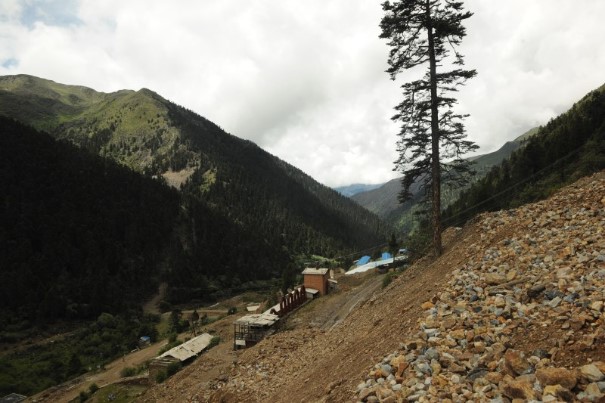This is Shangri-la, in the northwest of China’s Yunnan Province. It’s one of the most biologically diverse places in the world.
Forests like this are known as ‘Intact Forest Landscapes’ (IFLs). They’re incredibly rare and precious; complex hives of biodiversity and important carbon stores, a result of centuries of unharried growth, untouched by human activity.
However, these unique landscapes are under threat. Now, only 3.34% of China’s forests are IFLs. China has lost 490,000 hectares in the last 13 years alone, over half of which was located in northern Yunnan.
Earlier this year, Greenpeace East Asia investigated the destruction of IFLs, with disturbing results. We discovered that 24 mines operating in the IFL areas, 3 of which were in a UNESCO heritage site.
Rogue mining in this UNESCO site in SW China is harming some of world’s most precious forest https://t.co/CjK0InzrXE pic.twitter.com/BhdP2Bttd7
— Greenpeace East Asia (@GreenpeaceEAsia) July 27, 2016
I saw with my own eyes how the once exceptional landscape close to the mines had been devastated. Parts of the green, dense forest had transformed into bare brown earth. The degraded land was suffering from landslides and refuse water of the mines had poisoned the water in some areas.
Following the report, we kept up the pressure, paid visits to provincial government offices and the local government took these actions:
- Yunnan Provincial government carried out their own investigation into the mines featured in our report.
- They immediately shut down ALL the mines in the UNESCO World heritage site and the surrounding nature reserve.
- Required local governments to immediately start restoration work in the damaged areas
- Created new provisions for mining companies, requiring potential mining companies to carry out environmental impact reports and submit them to the Ministry of the Environment before beginning operations.
This is fantastic news but there’s more work to be done. The government paid attention to our demands and shut down the mines: now it needs to recognize and protect its remaining IFL areas. Chinese provincial governments are currently in the process of drawing up ‘ecological redlines’, a new system designed to protect the country’s ecologically rich areas from further decline. It’s imperative that IFLs are included under these protections.
Meanwhile, we’ll keep up the pressure to ensure that these beautiful, untouched forests stay that way.
Kang Lin is a Forests campaigner for Greenpeace East Asia in Beijing.




